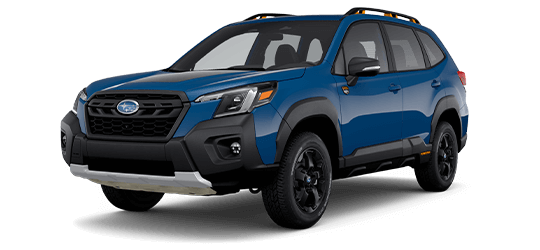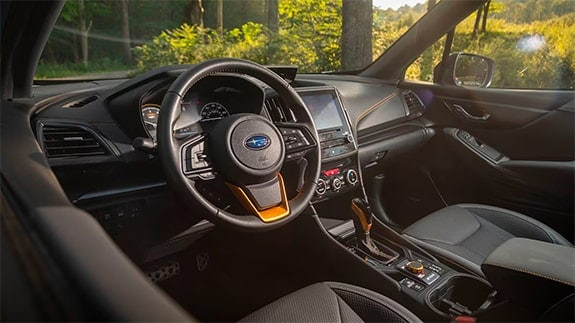Smartphones are our lifeline to the outside world. We rely on them to get directions, stream music and keep in touch with friends and family. In fact, the average person touches a smartphone an average of 2,617 times a day, according to a 2016 study. And so when people get into their cars, they are not likely to suddenly ignore their smartphones. Instead, they will try to integrate the phones into their driving routine. They put them in cupholders as makeshift speakers, mount them on the dash to see turn-by-turn directions or, worse, hold them and text while driving. None of these options has been an elegant — or safe — solution to the problem of adapting a smartphone to car use.
How Do I Use Apple CarPlay and Android Auto?
How They Work and Options for Those With Older Vehicles
But software from Apple and Google (Apple CarPlay and Android Auto) bring a number of major features from a smartphone to a vehicle's infotainment screen.
How Do They Work?
For Apple CarPlay and Android Auto to interact with a car, the vehicle must be outfitted with the proper hardware and the phone must have certain firmware (more on that later). When the systems first launched, both required the driver to connect a phone via a USB port. Since then, however, Apple and Google have made it possible to run their systems wirelessly, provided that the vehicle has an in-car Wi-Fi connection. Android Auto requires that the Android Auto app be installed and running on the phone; Apple CarPlay is integrated into the iPhone operating system. Once initiated, the software automatically handles the Bluetooth pairing process. And once the driver hits the appropriate button on screen, the system will transition into the Apple or Android interface.
See Edmunds pricing data
Has Your Car's Value Changed?
Used car values are constantly changing. Edmunds lets you track your vehicle's value over time so you can decide when to sell or trade in.

Both systems will adapt to the vehicle's control method, which means touchscreens, control knobs or a combination of the two. The user initiates voice commands with a long press of a button on the steering wheel or on the screen itself.
At this point, contacts, text messages, music and recently searched destinations will display on screen, each in its own menu. The data comes from the smartphone and is not stored in the vehicle.
Apple CarPlay and Android Auto are designed to coexist with the vehicle's built-in feature set, but you'll have to go in and out of the system to make everything work. For example, if you want to stream music from Spotify but also want to use the vehicle's navigation system, you must exit Android Auto or CarPlay by pressing the button with the automaker's logo. Then you can fire up the navigation system as the music runs in the background. Similarly, if you want to use Google Maps or Apple Maps for directions but also want to listen to FM radio, you would have to exit the CarPlay or Android Auto system, tune to the station, and then go back into Android Auto or CarPlay.
Each system takes a different approach to displaying the data, but the goal is the same: reducing distraction by getting the driver to put down the phone and instead rely on voice functionality and the presentation of data on the vehicle's screen. Here's how each system handles this.
Apple CarPlay
Apple has been working with automakers since 2004, first with iPod integration, later with Siri Eyes Free and currently with Apple CarPlay, which the company introduced in 2013. It was called "iOS in Car" at that time.
The CarPlay home screen features many of the recognizable application tiles from the iPhone. Phone, music, maps, messages and podcasts are the major apps for CarPlay. Apple must approve third-party apps, and they are limited to audio content, such as iHeartRadio, MLB's At Bat, and Stitcher.
In other words, don't expect to see Facebook or Twitter on either system anytime soon.
The CarPlay system primarily relies on voice commands, with Siri's assistance. When you start up the phone app, Siri will ask, "Who do you want to call?" You can dictate text messages to Siri, which will also read aloud incoming text messages. To minimize distraction, the text won't appear on screen.
Siri will get a full makeover in the fall of 2017 with iOS 11, bringing an improved voice and the ability to respond to contextual commands. In other words, it remembers the conversation that preceded the most recent command. For example, if you ask, "Are there any Italian restaurants nearby?" you'd be shown a list of restaurants and your reply could be, "Navigate to the second one."
Siri's voice search isn't limited to phone and navigation. Most other Siri commands, such as asking it to give you weather reports or sports scores, will work as well. But the information won't appear on screen.
In CarPlay, the Apple Maps app will suggest locations based on data in your email, texts or recently searched locations. Improvements to this app (also in iOS 11) will add lane guidance, speed limit signs, more detailed maps and better route recommendations. CarPlay will display turn-by-turn directions on the vehicle's infotainment screen.
CarPlay will work with iPhone 5 or newer phones. They must have iOS 7.1 or newer firmware.
Android Auto
Google announced Android Auto in 2014, but it had been working with automakers before the announcement. It sought to make a car-specific interface rather than duplicate what was already on the phone.
The Android Auto home screen features Google cards that will show such things as the local weather, reminders of upcoming meetings, directions to a recently searched address, or the name of a song that's currently playing. The bottom of the screen has a row of buttons for the primary functions: maps, phone, home screen, music and car applications. These buttons display in all modes.
A microphone icon on the top right of every screen brings up the voice command feature. Google's voice system also has the ability to make contextual searches. For example, if you asked it, "What's the weather in San Diego right now?" and follow up with, "What time does the zoo close?" the system will remember that it had been asked about San Diego and will display the hours for the San Diego Zoo. You can then follow up with, "How do I get there?" and it will bring up directions to the zoo.
Navigation defaults to Google Maps, but it will also support the Waze app. The turn-by-turn directions will appear on the car's infotainment screen.
Messaging on Android Auto is done entirely by voice. An incoming text will be shown as a notification, and it will be read aloud rather than displayed on screen. You also reply by voice. Android Auto will support third-party messaging services such as WhatsApp or textPlus.
Music on Android Auto will play from the phone or stream from Google Play Music, and the system supports third-party apps such as NPR One, SoundCloud and Pocket Casts. The interface will remain consistent, regardless of the source of the music.
The car applications button is a work in progress at the time of this writing, but it could potentially allow automakers to display information about the vehicle, help a person make service appointments or call for roadside assistance.
Finally, Android Auto will lock the phone while in use to encourage the driver to use the voice and on-screen functions.
Android Auto will work on smartphones with Android 5.0 Lollipop and newer firmware.
Which Cars Use Android Auto and Apple CarPlay?
Both systems were initially slow to roll out since automakers often wait until a model is redesigned to update its infotainment system. A handful of 2015 models initially supported one or both systems, but availability has significantly improved with 2017 model-year vehicles and newer. Apple maintains a list of vehicles that support CarPlay. Google does the same for Android Auto. There are a few holdouts: Mazda is late to the party, but it promises support for both systems soon. Meanwhile, Toyota hasn't expressed any interest in either system. The automaker prefers that its customers use its own Entune interface and suite of compatible apps.
Options for Older Vehicles
If you're not ready for a new car or recently have bought one that didn't have the necessary hardware, you have a couple of options:
Go aftermarket: Receivers from companies such as Alpine and Pioneer have infotainment systems that will add CarPlay or Android Auto to an older vehicle, but they aren't cheap. The receiver alone will cost at least $400, plus installation fees.
Check out the Android Auto app: If $400-plus sounds too expensive and you have an Android phone, you have another option: Download the Android Auto app and it will give you a scaled-down version of the system, albeit on a smaller screen. If you go this route, we highly recommend getting a smartphone mount. Operating the phone while driving can be against the law in some states, so make sure you check what is permitted.
Use Apple's new Do Not Disturb While Driving mode: Apple will introduce this mode as part of iOS 11. Do Not Disturb While Driving isn't a substitute for CarPlay, but it's a sensible way to block your iPhone-using impulses.
If you have this mode activated, the phone will sense when you are in the car via Bluetooth, USB or accelerometer. Incoming texts or notifications will not ping your phone and its screen will remain dark. People who text you will receive this reply: "I'm driving with Do Not Disturb turned on. I'll see your message when I get where I'm going." The phone will also send out a second text, for those worried about emergencies. It says, "If this is urgent, reply 'urgent' to send a notification through with your original message."
Phone calls would pass through the Do Not Disturb mode if the phone is connected via Bluetooth. Similarly, if your phone is connected to Apple CarPlay, the alerts would be routed to the car's infotainment screen and handled in a less distracting manner.
If you're still tempted to pick up your phone and hit the unlock button, a prompt will remind you that Do Not Disturb While Driving is on and ask you if you are still driving. This gives you a final chance to put the phone down if you are still on the road.






